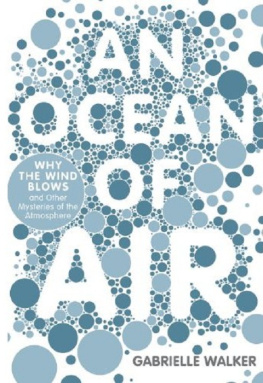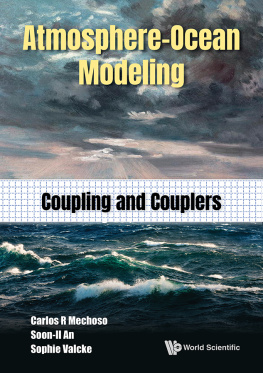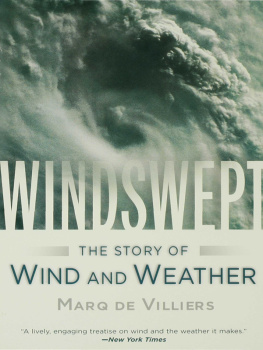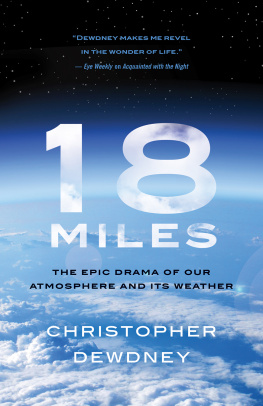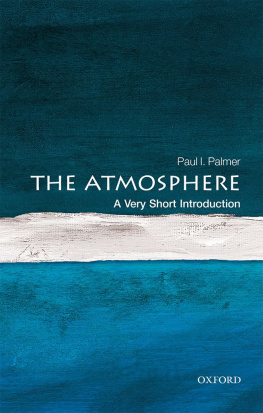EPILOGUE
JUNE 16, 2006, 9:00 A.M.
TASIILAQ, EAST GREENLAND
" THERE IT GOES. " Local weatherman Sren Basbll opens his fist to release the cable, and his weather balloon leaps eagerly upward. Within a few seconds we have to crane to see its tight white sphere outlined against the blue.
After almost a week of low clouds and flat white Arctic light, today has dawned unexpectedly clear and bright. At last we can see the tops of the mountains on the other side of the fjord. They are lined up with serrated sides and pointed summits, the way a child might draw a mountain range, and their flanks are still draped with snow. I know that beyond this first rank there are countless more, nothing but mountains, glaciers, and snow for 600 miles or more, and most of the peaks are unconquered and unknown.
In spite of the bright sunshine, the temperature is still below freezing and there is a stiff breeze. Sren retreats indoors to his coffee and computer, but I stay outside, watching the sky. The balloon is still visible, and if I squint, I can make out a gossamer cable below it that is trailing a small white box. Inside this box, instruments are gathering samples of Greenland's air. They are tasting and testing it. The numbers are already surfing back to ground on Marconi's radio waves: temperature, pressure, wind speed, and moisture, the meat and drink of the weather world.
I check my watch. By now Sren's balloon will have passed through the lowest part of our atmosphere, the part that means the most to the local Inuit hunters, and to the rest of the human race.
The air here in Greenland seems somehow more substantial than it ever is farther south. Perhaps it's the cold, or the manifest absence of smoke and industrial pollution, but you feel aware with every breath that something sweet and fresh is entering your mouth and filling your lungs.
Robert Boyle would have had little difficulty in persuading the residents of this small Arctic town about the power of the atmosphere or its substance. They feel it almost every winter, when the Piteraq winds appear. Heavy, cold air pours down from the icecap; it gathers speed as it is funneled down the glacial valleys until it arrives in town with the force of a hurricane, to tear off roofs and shatter windows. During a Piteraq is the only time the sledge dogs are allowed to roam free from their chains and seek shelter where they canthe air can be more than strong enough to hurl them into the sky.
Sren is Danish, but he has lived here for decades, and he has developed his own private scale for the Piteraq winds. Level one is when his oldest anemometera type of wind-measuring devicegives up the ghost. Level two, at about one hundred knots, is when the second one follows suit. Level three is when the welding of this second anemometer breaks loose and begins to flap uncontrollably, like a helicopter with only one rotor. And level four is when all his instruments blow away.
We are approaching summer now, and the winds are gentler. Still, today's breeze was enough to transform the bay. Yesterday the water was practically clear; today it is crammed with floes of ice that have been blown in from the open sea. Years of partial melting and refreezing, slamming together and ripping apart, have sculpted these floes into the shape of whipped meringues. And here and there, an iceberg towers above the sea ice. Each one of these tall bergs was born in the heart of this frozen land and has spent thousands of years sliding gently toward the coast before it picked up pace on the steep side slopes, broke off into the water of the fjord, and is now sailing out to sea.
Greenland is a sensitive soul, a high-strung region of a restless planet. A slight nudge downward in temperature can make the entire fjord freeze; another nudge and there's nothing but open water. I'm here to witness some of these changes, effected by the atmosphere. For Greenland's sensibility means that the sinister side of carbon dioxide is already making itself felt. The icecap here is melting; the glaciers are speeding up and delivering ever more icebergs to the sea; the sea ice, haven for seals, hunting ground for polar bears, is on its own downward route to extinction. Satellites show that the summer minimum in sea ice has shrunk by 8 percent per decade over the past thirty years, and by the end of the century summers here will be all but ice free.
The Inuits here say they are unconcerned by this prospect. They are hunters, not farmers. They are accustomed to change, to reading the signs of our restless planet and reacting to them. Theirs is an entrepreneurial attitude to weather and climate, one that the rest of us will do well to learn as the changes affecting Greenland make their inevitable way south.
But Greenland also counts on the natural warming that carbon dioxide brings and the capacity of the air to redistribute the world's warming wealth. William Ferrel's third giant wind cell descends hereabouts, bringing with it warmth from the south. There's not much life on view on this frozen island, but without Ferrel's wind cells there would be no life at all.
Above the layer of wind and weather, Sren's balloon must now be swelling as it rises into the thinning air. On the ground it was only about a meter wide, but it will eventually grow to four times the size, as the hydrogen inside meets less and less resistance when shoving against the thin latex skin.
Perhaps it has already passed through Joseph Kittinger's vantage point, twenty miles up. Around it is the blackness of space; in the distance, the gentle curve of Earth with its thin blue line of atmosphere; below it, a few wispy clouds, and me.
It must be encountering our planet's outermost defenses. There might even be an aurora, flickering into life in the black sky above Sren's balloon. On the ground I am dazzled by the perpetual summer sunlight, but I know this is prime aurora territory, and if I were here in the winter darkness I would see the lights for real. This is the very place where Earth's magnetic field lines guide radioactive beams from space into the waiting arms of the ionosphere; where the aurora borealis shows the protective power of our air in action. Clamped to the sea floor of our ocean of air, I try to picture its uppermost layers. But in spite of everything that I've read, I can scarcely believe that air too thin for me to breathe is yet strong enough to fend off everything that space can throw at us.
Yet it is. In October 2003, a series of explosions rocked the outer surface of the sun. A massive flare flash fried Earth with x-rays equivalent to five thousand suns. A slingshot of plasma barreled toward us at two million miles an hour. The radioactivity it contained was the equivalent, said one scientist, of taking every nuclear warhead that has ever been madenot exploded, mark you, but madeand detonating them all at once.
And yet nobody on Earth felt a thing (though perhaps you were lucky enough to see the light show). The most massive solar flare since records began and one of the biggest radioactive maelstroms in history together met a far more formidable foe. They each arrived, and then, one by one they simply bounced off ... thin air.
ACKNOWLEDGMENTS
I have been writing stories about parts of the atmosphere for over a decade, and yet it might never have occurred to me to look at the air as a whole if it hadn't been for the questions people kept asking me. Thanks, therefore, to Fred Barron who wanted to understand about the winds and to Simon Singh who wondered how we first discovered that the atmosphere has layers and what each layer really does. It was Simon, too, who suggested that I calculate the weight of the air in an "empty" concert hall, the results of which surprised me much more than they did him. Thanks also to the many people who wanted to know more about how the atmosphere was changing. After ten years of preaching about climate change to only, it appeared, the converted, I'm thrilled that this has finally become such a hot topic.

